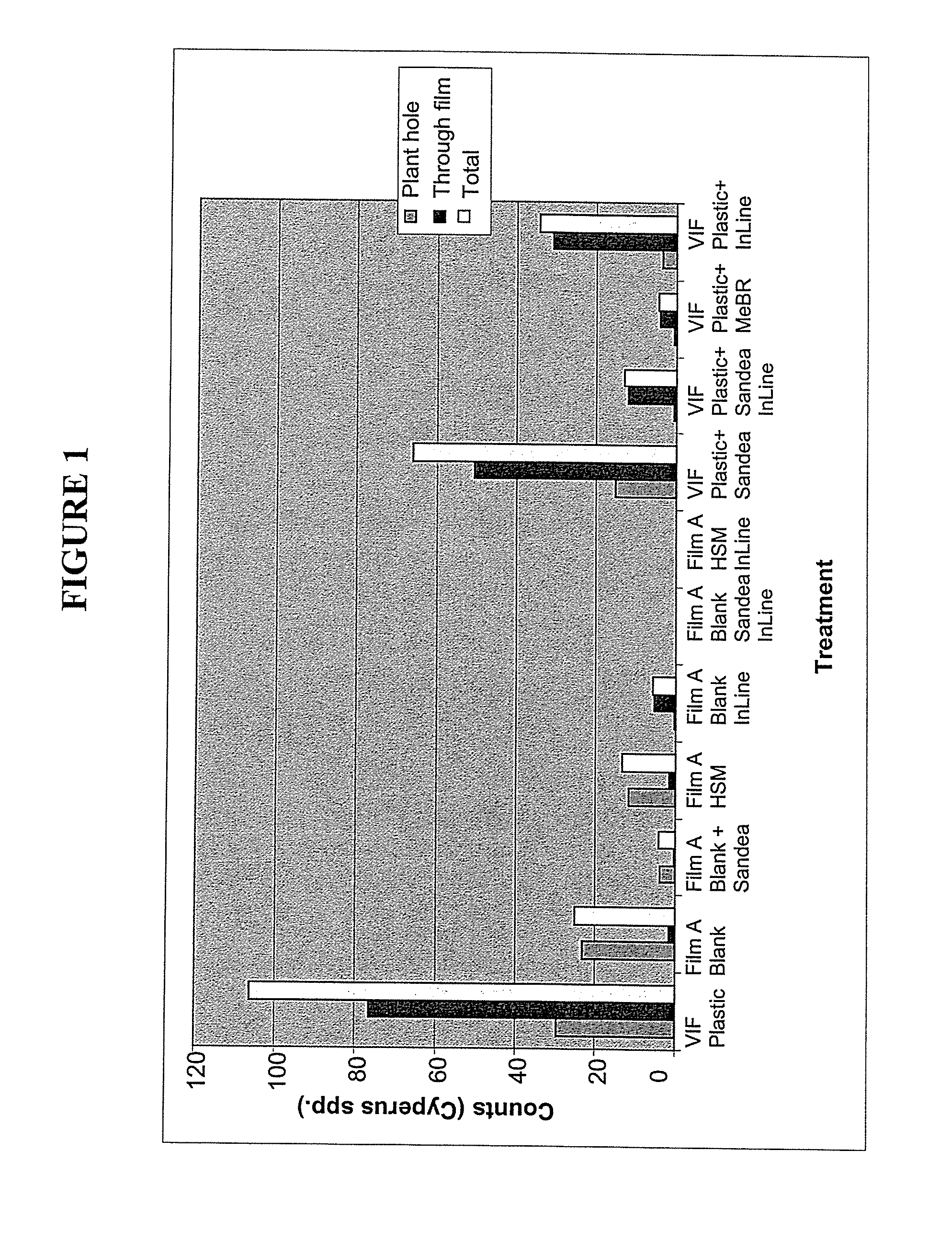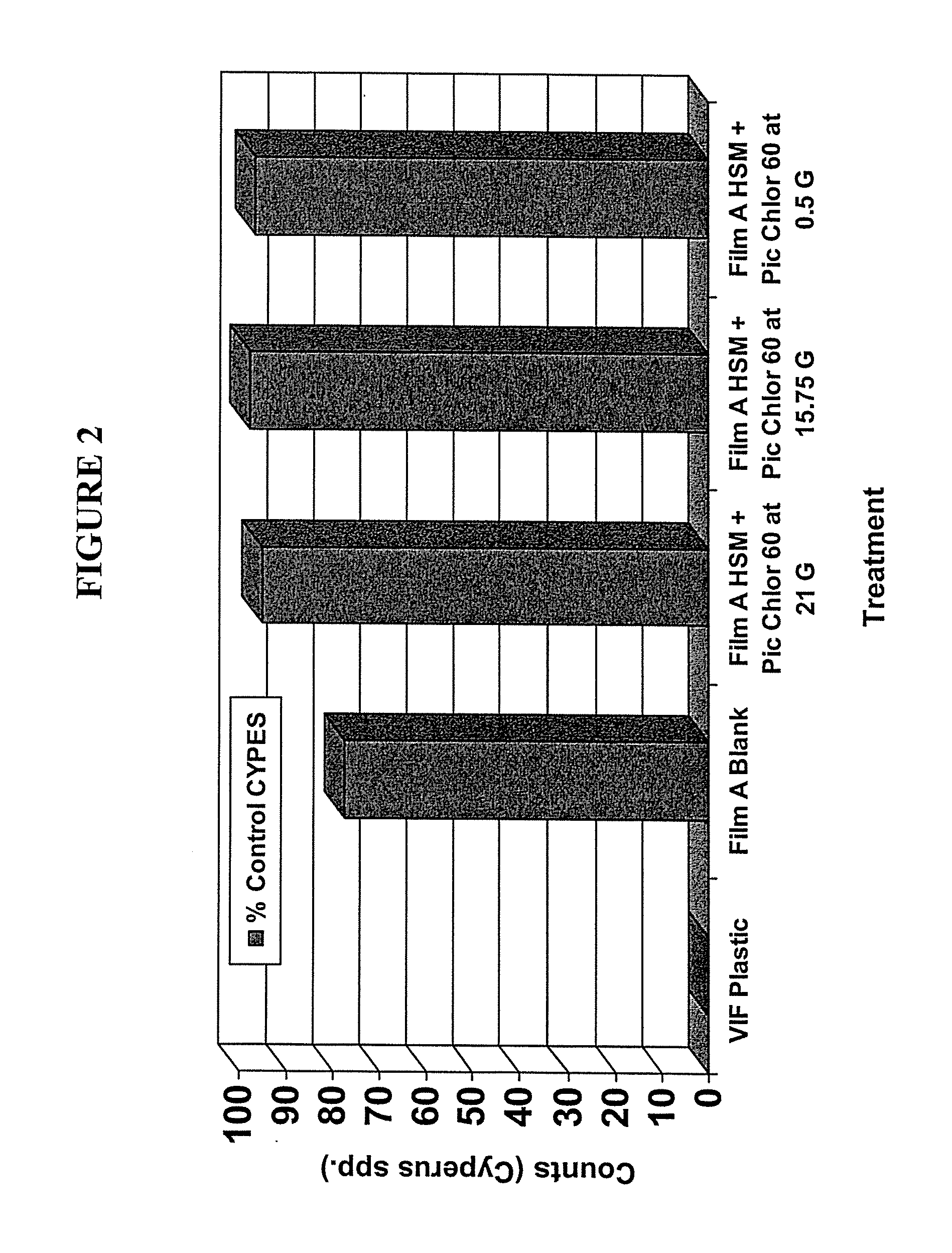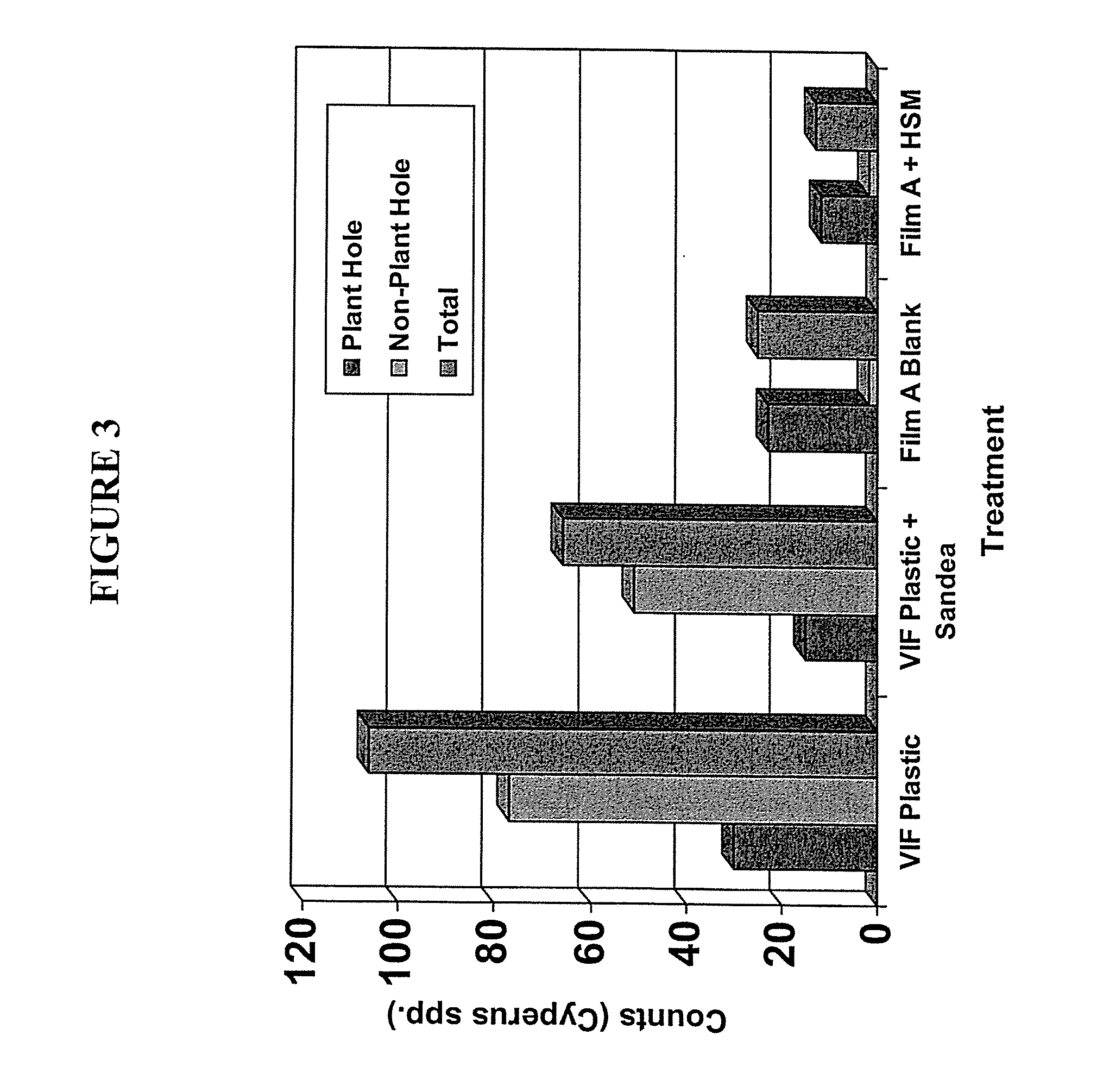Methods of increasing crop yield and controlling the growth of weeds using a polymer composite film
a composite film and crop technology, applied in the field of polymer composite materials, can solve the problems of unsuitable food and medical articles production, harvesting or transportation, unsuitable for exothermic reactions, difficult and complex control of the right amount of disinfectant over a given time period, etc., and achieve the effect of long li
- Summary
- Abstract
- Description
- Claims
- Application Information
AI Technical Summary
Benefits of technology
Problems solved by technology
Method used
Image
Examples
example 1
Manufacturing of Propagation Films
[0171]Propagation films by coating a polyethylene film with following additional layers was manufactured by using a curtain casting machine:
[0172]Film 1:
[0173]Base: Corona treated 100 μm thick Low-density polyethylene (LDPE) polyethylene film
[0174]First layer: 9.36 g / m2 superabsorber S1 (flexible absorbent binder composed of: 20-40% by weight Sodium Polyacrylate (CAS-No.: 9003-04-7), 2-5% by weight polyethylene glycol (CAS-No.: 25322-68-3), water (CAS-No.: 7732-18-5) dissolved in 53.40 g water
[0175]Second layer: 9.36 g / m2 superabsorber S1 dissolved in 53.40 g water
[0176]Third layer: 9.36 g / m2 superabsorber S1 dissolved in 53.40 g water
[0177]Fourth layer: 9.36 g / m2 superabsorber S1 dissolved in 53.40 g water
[0178]Film 2:
[0179]Base: Corona treated 100 μm thick Low-density polyethylene (LDPE) polyethylene film
[0180]First layer: 9.36 g / m2 superabsorber S1 and 3.12 g / m2 gelatin dissolved in 53.40 g water
[0181]Second layer: 9.36 g / m2 superabsorber S1 and ...
example 2
Mechanic Stability of the Films
[0196]Then, the films prepared according to example 1 were soaked for 10 minutes in distilled water. Subsequently, excessive water was drained and the mechanic stability was tested by washing-up the soaked layers with flowing warm water. Whereas the superabsorber S1 layers dissolve from the polyethylene layer in film 1, the additional layers in films 2 and 3 do not dissolve from the polyethylene layer.
example 3
[0197]Manufacturing of Fumigation Films with Biocides
[0198]According to similar methods as described in example 1, following six fumigation films were manufactured with the following final coating thickness after drying
[0199]Base: Corona treated 100 μm thick high-density polyethylene (HDPE) film
[0200]First layer: 6 μm superabsorber binder
[0201]Second layer: 6 μm superabsorber binder
[0202]Third layer: 6 μm superabsorber binder
[0203]Fourth layer: 6 μm superabsorber binder
[0204]Fifth layer: 3 μm gelatin with herbicide
[0205]Sixth layer: 3 μm gelatin hardened
[0206]Following different herbicides were introduced in the fifth layer: placebo (film 1), aclonifen (150 mg / m2; film 2), ethoxysulfuron (6 mg / m2; film 3), isoxaflutole (10 mg / m2; film 4), benfuresate (150 mg / m2; film 5), glyphosate (200 mg / m2, film 6), Halosulfuronmethyl (5 mg / m2, film 7).
PUM
| Property | Measurement | Unit |
|---|---|---|
| thickness | aaaaa | aaaaa |
| thickness | aaaaa | aaaaa |
| thickness | aaaaa | aaaaa |
Abstract
Description
Claims
Application Information
 Login to view more
Login to view more - R&D Engineer
- R&D Manager
- IP Professional
- Industry Leading Data Capabilities
- Powerful AI technology
- Patent DNA Extraction
Browse by: Latest US Patents, China's latest patents, Technical Efficacy Thesaurus, Application Domain, Technology Topic.
© 2024 PatSnap. All rights reserved.Legal|Privacy policy|Modern Slavery Act Transparency Statement|Sitemap



